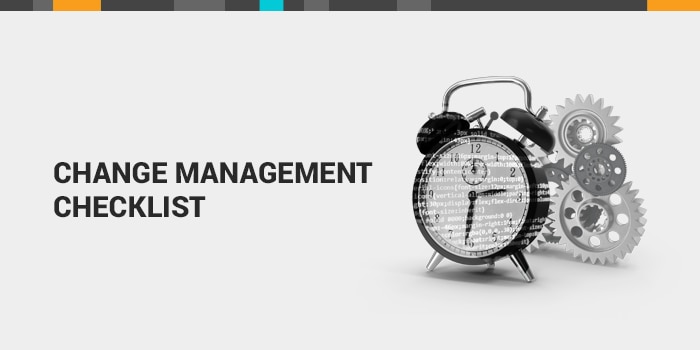Okay, good. You have a change management practice in place. You know
how to define it, its benefits,
how to get the process started, and
how to measure its success. You also know it makes for greater success for business initiatives, it prepares the organization for the future, and drives consistency. But how can your current change management practice be improved upon? No matter if you’re a change requestor or change manager, the improvement of your current practice depends on these four actions.
Classifying changes
This is the first step when performing a change. It’s important to identify what type of change you’re working with because not all are equal in priority and importance. Some changes will require minimal work by change managers and the change advisory board (CAB) while others need quick decision making and all hands on deck to ensure change success and to minimize disruption to the business.
- Standard changes are your low-risk, routine changes that don’t require much planning or additional authorization from the change advisory board (CAB). They happen frequently and often begin as service requests. These types of changes benefit from being automated to cut down on time spent by service technicians to resolve.
- Next are normal changes, which need to be scheduled, assessed, and authorized by CAB members. These changes don’t happen as frequently as standard changes and “are broader in scope or touch a critical piece of infrastructure.” Normal changes are usually triggered by a change request, and can also be resolved manually or automatically.
- Emergency changes happen without notice, triggered by things like security breaches and server reboots. They need to be implemented immediately, and require review and approvals by all CAB members as well as quick decisions by change managers. If these changes aren’t performed quickly and with precision, the business could face significant disruption and risk.
How can you ensure changes are classified correctly when they’re requested? It’s a good question, and it leads us to change templates.
Leveraging effective change templates
Every change varies, but there are basic templates showing how they can be implemented. Rigid change templates can be most beneficial for standard changes because, in many cases, these are straightforward requests (like application access) that any non-technical end user might submit. Change templates can and should be applied to emergency changes as well, but perhaps the requester can be allowed more freedom within the request to provide details as access to these templates is restricted to specific IT pros. Basic information that applies to all change templates should include the change start and end date, the site or department the change will take place in, what’s expected to happen, etc.
Changes should be thoughtful and minimize the impact on services and customers. Creating templates lays the foundation for successful change implementation, helps organizations evaluate possible risks and ensure the data is collected in an efficient and timely manner.
To get an in-depth explanation of how to leverage change templates, check out
this blog.
Automating workflows and approvals processes
Automating workflows and approvals processes can be a lifesaver. It saves service technicians’ (and the organization) time by removing manual labor previously required when a change is implemented.
As mentioned earlier, automation works well for standard and normal changes because they’re pre-approved and pre-authorized by CAB members. Creating automated workflows behind each change template also assures that the right process is followed each time the change is implemented. Automating the change request process reduces risks and increases efficiency of the change.
Documenting historical data
Documentation, in any sense, will be useful in the future. It helps us to know what happened and what worked in the past to better prepare for the future. After all, history can repeat itself. Documenting changes is no different. Make note of change success rates, average times to complete changes, change impacts, etc.
Incorporating a basic change management process is one of the first steps to reaching and maintaining efficiency in a business. Changes to applications, software, and servers can happen daily, and even multiple times a day. This frequency should prompt service techs to have a well-designed process to properly evaluate and implement those changes.






